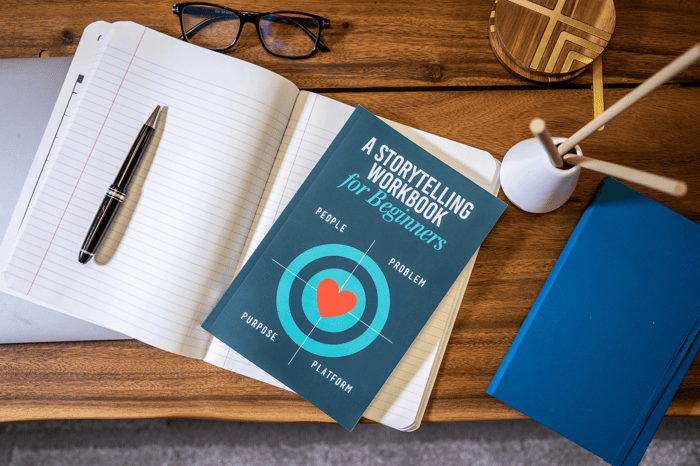In today's competitive business environment, a memorable logo is an essential asset for any brand. Crafting a logo that captures a company's essence while leaving a lasting impression on customers is both an art and a science. A well-designed logo serves as the visual cornerstone of a brand's identity, conveying its values, personality, and mission at a glance. This is particularly crucial in the digital age, where businesses often have mere seconds to impact potential customers.
This article delves into the key elements that create an unforgettable logo. It explores the psychology of colour in design, the importance of typography choices, and the power of iconography and symbolism. Additionally, it outlines the logo design process and provides practical tips for business owners and entrepreneurs developing a strong visual brand. By understanding these principles, readers will be better equipped to craft a logo that represents their brand effectively and resonates with their target audience in a crowded marketplace.
The Importance of a Memorable Logo
Brand Recognition
A memorable logo is a critical asset for any brand. A distinctive and memorable logo helps consumers quickly identify and recall a brand, differentiating it from competitors. This recognition builds trust and loyalty over time, making it more likely for consumers to choose the brand over others. Ideally, people should instantly connect a logo with the company's offerings and, more importantly, how it makes them feel. Over time, a logo should create a deep symbolic association with people's memories and emotions.
Customer Trust
A well-designed logo validates a company's professionalism and builds trust in its services. It tells potential clients who the company is, what it does, and how it benefits them. Trust is fundamental to brand loyalty, motivating customers to return and recommend the brand to others. A professional and aesthetically pleasing logo suggests the brand is reliable and credible, encouraging consumers to trust its products or services. Conversely, an unprofessional-looking logo may cause potential clients to question how well a company can deliver its products and services.
Marketing Impact
A logo is a company's first introduction to consumers. If designed well, it can pique the public's interest and invite them to learn more about the company. It should be front and centre of all marketing materials, such as business cards, flyers, and advertisements. A unique and distinctive logo helps a brand to differentiate itself from competitors, making it more recognisable and memorable. By highlighting what sets the brand apart through design elements, logos can effectively communicate the brand's unique qualities and advantages.
Critical Elements of an Effective Logo
Simplicity
Simplicity stands as a cornerstone of effective logo design. Many of the most impactful and successful logos in history are surprisingly simple. Simple logos are easy to recognise and remember, crucial because consumers typically focus on a logo for only a short time. A clean, uncluttered design can express a brand's personality concisely and effectively, highlighting the most critical aspects with limited visual real estate.
Relevance
The logo must be pertinent to the business it represents, though it doesn't necessarily need to be a literal representation. It should communicate the company's background, mission, and values. For instance, a company selling children's toys might opt for bright colours that convey energy, fun, and excitement.
Timelessness
A timeless logo ensures that a brand's visual identity remains relevant as the business grows and evolves. A timeless logo should be able to adapt to new products or services without losing its core identity. It should communicate the brand's message effectively and evoke an emotional response from viewers, regardless of changing trends or time.
Versatility
A versatile logo can be used in different sizes, from a tiny app icon to a giant billboard, without losing its impact or legibility. It should work well in both colour and black-and-white formats, ensuring effectiveness even when printed in greyscale or displayed in environments with limited colour reproduction. Versatility also means the logo can adapt to different backgrounds and mediums, maintaining its visibility and contrast in any context.
Memorability
A memorable logo sticks in the minds of consumers. This can be achieved through unique design elements, clever use of colour, or even incorporating negative space, like the hidden arrow in the FedEx logo. Memorable logos often evoke emotions or associations with the brand they represent, creating a lasting impression on viewers.
Colour Psychology in Logo Design
Emotional Associations
Colours can trigger specific emotional responses and associations in viewers. For instance, red is known to arouse excitement and boldness, creating a sense of urgency. Blue evokes feelings of calmness, control, and security, making it a favoured choice for companies aiming to establish trust-based relationships with their customers. Green signifies growth, nature, and harmony, often used by eco-friendly companies. Yellow is associated with cheerfulness and energy, while purple symbolises wealth, power, and creativity.
Industry-Specific Colours
Different industries tend to gravitate towards specific colours that align with their sector's values and consumer expectations. For example, financial institutions often use blue to convey trust and professionalism. Eco-friendly brands frequently use green to emphasise their connection with nature and sustainability. Luxury brands often incorporate black to project sophistication and prestige. Understanding these industry trends can help brands align with established norms or differentiate by choosing unique colour combinations.
Colour Harmony
Creating a harmonious colour palette is essential for effective logo design. Approaches include using complementary colours, analogous colours, triadic colours, and monochromatic schemes. The right combination can enhance brand recognition and make a logo more memorable.
Typography Choices for Logos
Serif vs Sans-Serif

Credit: Spi-des-ign
Serif fonts, characterised by small decorative strokes at the ends of letters, evoke a sense of tradition, authority, and sophistication. They are often associated with reliability and timeless elegance. Sans-serif fonts project a clean, modern, and approachable vibe, popular among tech companies and startups. The choice between serif and sans-serif often depends on the brand's desired perception and target audience.
Custom Typefaces
Creating a custom typeface for a brand can establish a unique visual identity. A custom font acts as the brand's voice, reinforcing its message across all communications. Investing in a custom typeface should be carefully considered, taking into account factors such as character set, languages supported, number of users, platforms, and intended use.
Font Personality

Credit: Daily Infographic
Fonts can convey emotions and moods, much like human personalities. Different letterforms evoke specific emotional reactions from readers, contributing to the brand's overall perception. The font's personality should align with the brand's values and resonate with the target audience.
Iconography and Symbolism
Abstract vs Literal Icons
Abstract logos communicate their message through designs that require interpretation, transforming literal objects or ideas into abstract representations. Literal icons are more straightforward and immediately recognisable. The choice between abstract and literal icons often depends on the brand's needs, target audience, and the complexity of the message they wish to convey.
Cultural Considerations
When designing logos with iconography and symbolism, it's crucial to consider cultural implications, especially for brands with a global reach. Symbols can have different meanings across cultures, and misunderstanding these nuances can lead to negative perceptions.
Negative Space Techniques
Negative space involves using the empty or unused space around and between design elements to form additional shapes or images. This technique can create stunning and memorable logos, like the hidden arrow in the FedEx logo. Designing with negative space requires experience and careful consideration to ensure the logo remains legible in all sizes.
Logo Design Process
Research
The first step in creating a memorable logo is thorough research. This phase involves understanding the business, history, industry, competitors, and target audience. Compentent designers delve deep into the brand's core values, mission, and vision to ensure the logo effectively reflects these elements.
Sketching
Sketching is where creativity truly comes into play. Designers begin by brainstorming ideas and using techniques like mind mapping. Sketching by hand allows for quick exploration of various styles, fonts, and symbols, generating many possibilities before moving to digital tools.
Digital Rendering
Once promising sketches are selected, the process moves to digital rendering. Vector-based software like Adobe Illustrator is the industry standard for this stage. Designers experiment with colour palettes, gradients, and digital effects to bring their concepts to life.
Refinement
The refinement stage involves polishing and perfecting the details of the chosen design. Feedback is crucial at this stage, providing fresh perspectives that can lead to further improvements.
Testing
The final step in the logo design process is testing. This involves evaluating the logo's effectiveness in various contexts and applications. Testing may include online surveys, focus groups, or eye-tracking studies to identify potential issues or negative associations.
Conclusion
Creating a memorable logo is crucial in building a solid brand identity. A well-designed logo can grab attention, foster trust, and leave a lasting impression on customers. Businesses can craft logos that effectively communicate their values and resonate with their target audience by focusing on critical elements like simplicity, relevance, and versatility.
As Australia's premier domain name marketplace, Brandzilla understands the importance of a solid visual identity, which is why it provides a professionally designed logo with every domain name purchase.
The logo design process, from initial research to final testing, requires careful thought and creativity to develop a symbol representing a brand. Colour psychology, typography choices, and iconography all play vital roles in shaping how a logo is perceived. By leveraging these elements effectively, businesses can create logos that not only look great but also have a significant impact on their marketing efforts. Brandzilla's commitment to providing professionally designed logos with domain purchases helps businesses start on the right foot, ensuring they have a solid foundation for their brand identity in the competitive digital landscape.




